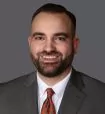On April 17, 2020, Mayor London Breed signed the San Francisco Public Health Emergency Leave Ordinance (PHELO). The San Francisco Board of Supervisors had passed the ordinance earlier in the week. Like similar ordinances adopted in Los Angeles and San José, San Francisco's ordinance supplements the federal Families First Coronavirus Response Act (FFCRA) and requires employers with 500 or more employees to provide up to 80 hours of paid leave to employees in both the city and county of San Francisco. The PHELO became effective upon enactment.
To which employers does the ordinance apply?
The PHELO applies to any private employer that is not a "Covered Employer" under the FFCRA. These employers include (a) private employers with 500 or more employees nationwide; (b) certain employers of healthcare providers and emergency responders exempt from the FFCRA; and (c) certain small businesses exempt from the FFCRA.
Which employees are eligible for emergency leave under the ordinance?
Employers must provide emergency leave to any person who performs work in San Francisco, including part-time and temporary employees. Businesses also must provide emergency leave to any other person presumed to be an employee pursuant to AB 5, which establishes an "ABC" test for determining an individual's independent contractor status. The finalized ordinance does not contain a minimum hourly work requirement.
The PHELO also applies to workers deemed to be employees under San Francisco's Paid Sick Leave Ordinance (PSLO). This includes employees who live in San Francisco and perform work from home so long as they perform 56 or more hours of work in San Francisco during a calendar year.
Employees are eligible for the emergency leave regardless of how long they have been employed by the employer.
Must employers provide emergency leave to furloughed employees?
The San Francisco Office of Labor Standards Enforcement (OLSE) does not recognize "furlough" as a defined term. Employers must provide leave unless a "separation of employment," such as a retirement or a layoff, has taken place. In determining whether an employer has separated an employee from employment, the OLSE will look to whether the employer complied with the California Labor Code and the California Unemployment Insurance Code. The Labor Code requires that employers pay out all accrued wages, including paid time off (PTO) and vacation, on the last date of employment. The Unemployment Insurance Code requires that employers provide employees with a Notice to Employee as to Change in Relationship.
How much emergency leave must employers provide?
Employers must provide 80 hours of emergency leave to employees who were employed full-time as of February 25, 2020, when Mayor Breed declared a state of emergency. For employees who were employed part-time as of February 25, 2020, employers must provide one hour of emergency leave for every hour (including hours taken for leave) that the part-time employee typically was scheduled to work during the average two-week period for the six months preceding February 25, 2020. The ordinance does not address the amount of leave employers must provide employees who did not work for the employer as of February 25, 2020.
However, employers may limit an employee to using only the average number of hours that an employee worked in one week over a specified period of time.
Can an employer credit to the emergency leave any paid leave already provided?
Yes. To the extent an employer provided additional, not already accrued, paid leave for COVID-19-related reasons between February 25, 2020, and the ordinance's effective date, the employer may deduct that time from the total paid emergency leave owed under the ordinance.
What is the pay rate at which employers must provide public health emergency leave (PHEL)?
Employers must pay emergency leave at the same rate at which they must pay San Francisco Paid Sick Leave (PSL). For nonexempt employees, employers should use the regular rate of pay, excluding overtime pay, for the workweek in which the employee uses PHEL. Employers also may pay PHEL to nonexempt employees by dividing the employee's total wages, not including overtime premium pay, by the employee's total hours worked in the full pay periods of the prior 90 days of employment. For exempt employees, employers should calculate PHEL in the same manner that they calculate other forms of paid leave.
Must the employee be scheduled to work in order to use PHEL?
No. A covered employee can take PHEL immediately upon the effective date of the ordinance, regardless of whether or when the individual is scheduled to work. However, an employee cannot take paid leave in an amount that is greater than the average number of hours the employer scheduled the employee to work during an average week in the six months preceding February 25, 2020.
For what reasons may an employee use PHEL?
An employee may take PHEL if he or she is unable to work for the following reasons:
- The employee (or a family member for whom the employee provides care) is subject to a quarantine or isolation order related to COVID-19, including shelter-in-place orders. This includes members of a "vulnerable population" as defined in San Francisco Public Health Order No. C19-05b, or individuals unable to work due to recommendations issued by the State of California or local governments regarding vulnerable or high-risk populations.
- A healthcare provider advised the employee (or a family member for which the employee provides care) to self-quarantine.
- The employee (or a family member for which the employee provides care) is experiencing symptoms associated with COVID-19 and seeking a medical diagnosis.
- The employee is providing care for a family member whose school or place of care has been closed or whose care provider is unavailable due to the public health emergency.
- The employee is experiencing a substantially similar condition as specified by a local health officer or under Section 5102(a)(6) of the FFCRA.
Does the PHELO provide healthcare providers and emergency responders with leave?
Yes, the ordinance also provides healthcare providers and emergency responders with PHEL, with limitations. If the employee is a healthcare provider or emergency responder (as 29 C.F.R. Section 826.30(c) defines those terms), the employer may limit the employee's use of paid health emergency leave unless the employee is unable to work because, (a) a healthcare provider advised her to self-quarantine; or, (b) she is experiencing symptoms associated with COVID-19, is seeking a medical diagnosis, and does not meet the Centers for Disease Control and Prevention's guidance for criteria to return to work for healthcare personnel with a confirmed or suspected diagnosis of COVID-19.
May the employer ask for a doctor's note?
No. Although the ordinance allows employers to require employees to identify the covered basis for a requested emergency leave, employers may not require health information or other documentation, including a doctor's note.
Must the employee follow the employer's paid sick leave notice procedures?
Yes, but only if those procedures are reasonable and if the leave is unforeseeable.
Do employers have to pay out PHEL if an employee leaves while the ordinance still is in effect?
No.
What other requirements must employers follow?
Employers may not require employees to use other paid leave before using PHEL or in increments of more than one hour. Employers may not require an employee to search for or find a replacement worker to cover for her while she is on emergency leave. Employers must pay PHEL no later than the next regular payday following the payroll period in which the employee took the leave.
Must employers provide notice to employees?
Yes. The City's Office of Labor Standards Enforcement has prepared a written notice, which employers may use. Employers must provide the notice in a manner calculated to reach all employees, including posting the notice in a conspicuous place and emailing it. The notice must be provided in English, Spanish, Chinese, and any other language spoken by at least 5 percent of the workforce.
Do employers have to list the amount of emergency leave available on wage statements?
Yes, to the extent feasible, an employer must list the amount of emergency leave available on itemized wage statements or in a separate writing.
Does the PHELO apply to employees covered under a collective bargaining agreement?
Yes, the PHELO applies to unionized employees unless the collective bargaining agreement expressly waives the ordinance's requirements in clear and unambiguous terms.
Does the PHELO prohibit retaliation?
Yes, the PHELO prohibits retaliation for engaging in protected activity under the ordinance. In addition, an employer is presumed to have retaliated against an employee if it takes adverse action against an employee with 90 days of the protected activity.
Must employers maintain records of any sort?
Yes, just as under the San Francisco PSLO, an employer must maintain records for four years of that documented PHEL was taken. Similarly, just as under the PSLO, employers that do not maintain such records are presumed to have violated the PHELO, absent clear and convincing evidence otherwise.
When does the PHELO become effective and when does it expire?
The PHELO became effective April 17, 2020, immediately upon Mayor Breed's signature. It expires 61 days later, unless reenacted, or upon the termination of the public health emergency declared by Mayor Breed on February 25, 2020.
Ogletree Deakins will continue to monitor and report on developments with respect to the COVID-19 pandemic and will post updates in the firm's Coronavirus (COVID-19) Resource Center as additional information becomes available. Critical information for employers is also available via the firm's webinar programs.
Originally published May 1, 2020.
The content of this article is intended to provide a general guide to the subject matter. Specialist advice should be sought about your specific circumstances.


